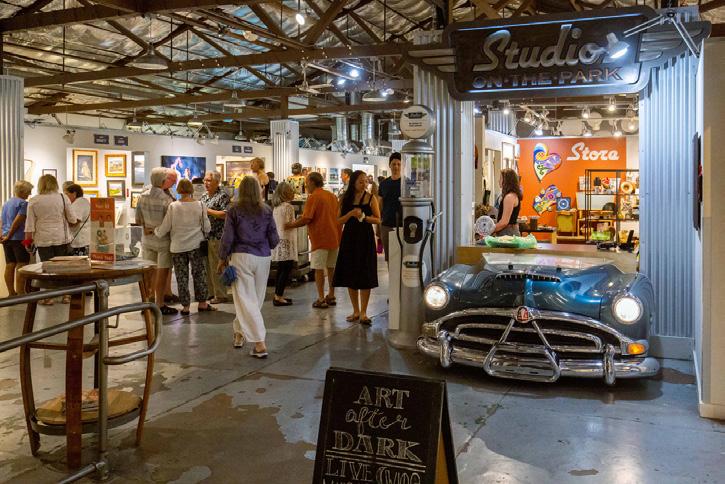
6 minute read
Paso Arts | A New Exhibition at Studios
PASO ARTS: ‘REGROUP’ REALISTIC & OPTIMISTIC
A new Exhibition at Studios on the Park
BY ANNE LADDON
As the summer heat takes a final dramatic bow on the Central Coast, the fall show, “Regroup,” at Studios on the Park is dropping jaws. This show is composed of the work of 16 local female artists whose artworks are as diverse as they are. The topic of womanhood and women’s reproductive rights is intimately discussed through the different artworks in various mediums with a wonderful mix of opinions and viewpoints.
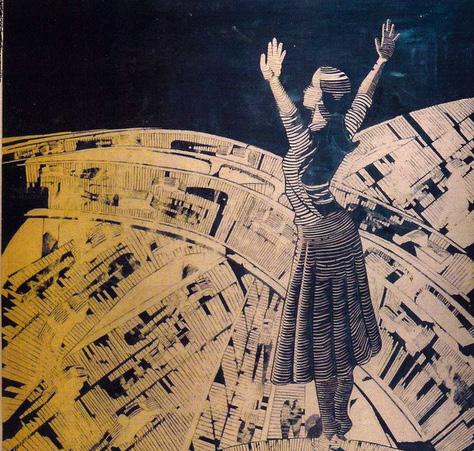
The “Regroup” exhibition inspired artists to turn inward toward each other, to huddle together, to discuss how to move forward through their artwork. But it is not a ‘time out’ by any means! a clinic in California. Set in the 1960s, the vintage wardrobe, props, and sets emphasize how reversing Roe v Wade and stripping women of access to abortion sets women back decades, to a time before equal rights, reproductive rights, access to contraceptives, and the shared cultural value of bodily autonomy. The fictional character of Birdie, whose health, stability and future are precarious mirrors the reality of many women now who have been stripped of their right to obtain an abortion and make decisions about their own bodies.
Artist Jenny Ashley’s comments about the photograph Motorlodge Mood, “You can feel the weight on Birdie’s shoulders in that moment — the weight of making difficult decisions, of being on one’s own for the first time, an overwhelming weight of knowing you are the only one who can save yourself, who can get yourself out of a bad situation and start a new journey. Birdie looks to the light of the full moon, the pull of the universe, for guidance and energy; it’s as if she were consulting with the moon for answers and guidance as she carries the weight of her newfound freedom.”
“Regroup” is an exciting exhibition, offering a refreshing way to rethink and reorganize. It gives the viewer a broadened perspective and hopefully strength to push forward. Let’s Regroup!
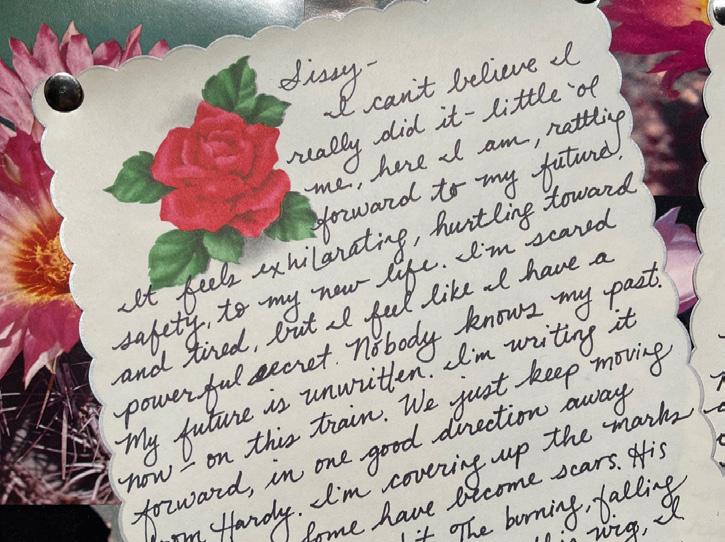
Artist Jenny Ashley’s statement about the project: “Through a series of cursive letters written on vintage stationary to her sister, the project is narrated by housewife Birdie who is on the run from the abuse and gaslighting of her partner and in search of a safe abortion at
Artist Melinda Forbes’ comments on creating her piece, “I was given the lining material of a very old antique gown. I did not realize the fabric was silk until I ice-dyed it. Pulling it out of the dye bath and drying it the sun revealed the radiance of silk. I wanted to use it but found the fabric so fragile that it tore and unraveled with every stitch. I tried many ways of mending and layering, appliqué and patching. The fabric began to look something like an aerial view of the Earth. The gown is narrative and the story developed. Mending the gown became a metaphor for mending and tending the Earth, mending our ways to preserve this beautiful planet we live with.”
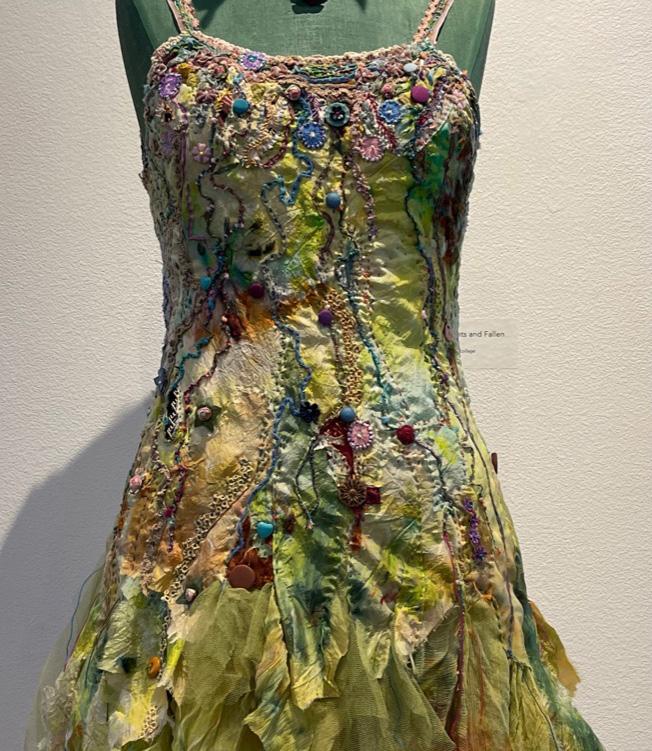
live with.”
Artist Judy Johnson Williams comments on her piece, “The exuberance of young adulthood, we feel we can do no wrong and will survive every risk. It’s not sustainable but a great feeling while it lasts.”
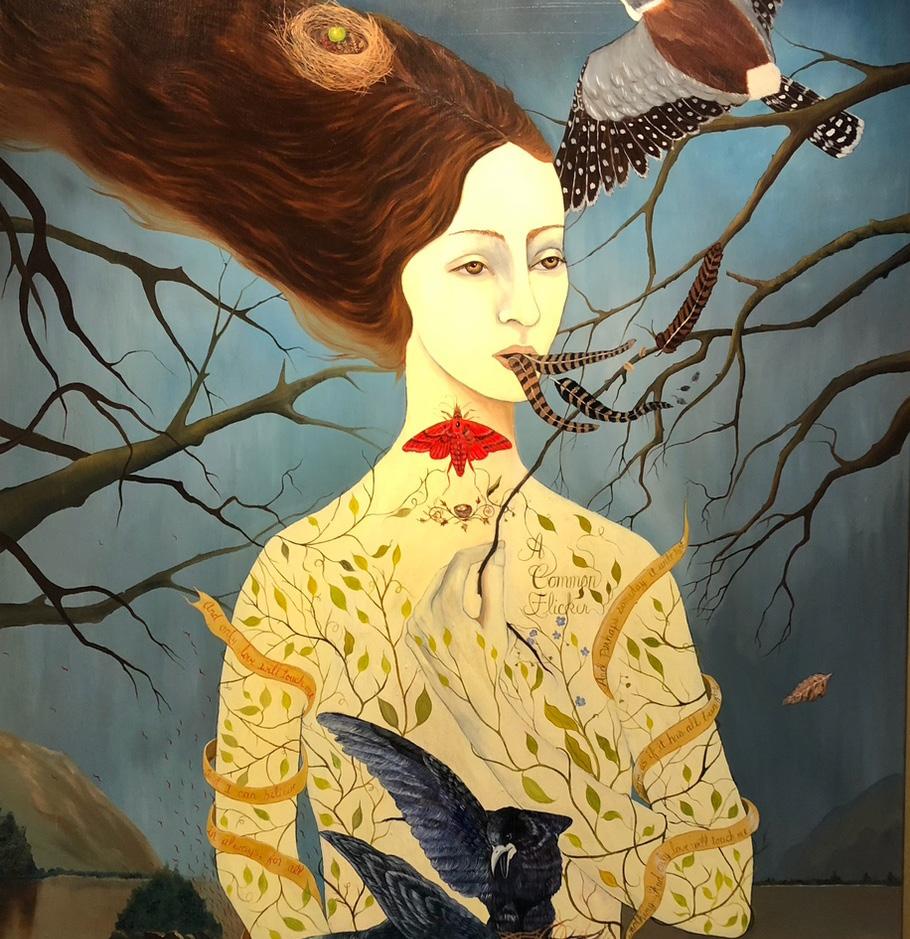
Studios on the Park is located at 1130 Pine Street in downtown Paso Robles, and is open at noon every day.
It is a nonprofit dedicated to providing a creative, educational, and transformational experience to enhance understanding and appreciation of the visual arts.
SLO ARTS
The importance of art and culture
BY MISSY REITNER-CAMERON, SLO COUNTY ARTS COUNCIL
Art and culture shape how we view the world around us. Art and culture, at their essence, present as some of the most significant, compelling, and social influences of human behavior and interactivity. Together they can start conversations, create empathy, cause reflection and cultivate new ideas and unions.
While often used together, art and culture have their differences. Art is learned by paralleling others or by self-taught methods and acts as an expression of imagination, concepts, or skill. Art can be visual, performative, or expressive and can be seen in painting, performance, sculpture, and more. Culture is an umbrella term that encompasses the social behaviors and norms found in human societies, as well as the knowledge, beliefs, customs, and habits of the individuals in these groups.
Recently San Luis Obispo County has had two wonderful examples of art and culture coming together in our community. The first is by Camille Hoffman, showing at the San Luis Obispo Museum of Art and is called “See and Missed.” This work activates Camille’s own ancestry and is deeply rooted in Filipinx history in America. This work directly references the historical date of October 18, 1587, when the first Filipinos stepped foot on Chumash land and the present-day Continental United States at Morro Bay, California. They arrived as crew members aboard the Nuestra Señora de Buena Esperanza, which was a part of the Manila galleon trade under Spanish rule.
“Calafia was Here”
Art has been a part of the human experience for as far back as cave paintings. Art is used to communicate ideas, pass down knowledge and express emotion. It is how generations share stories and beliefs with each other. Art is influential on a society and can change opinions, inspire values and create experiences across space and time. Art allows people from different cultures and eras to communicate with each other via images, sounds, stories and movement. Art is often a vehicle for social change.
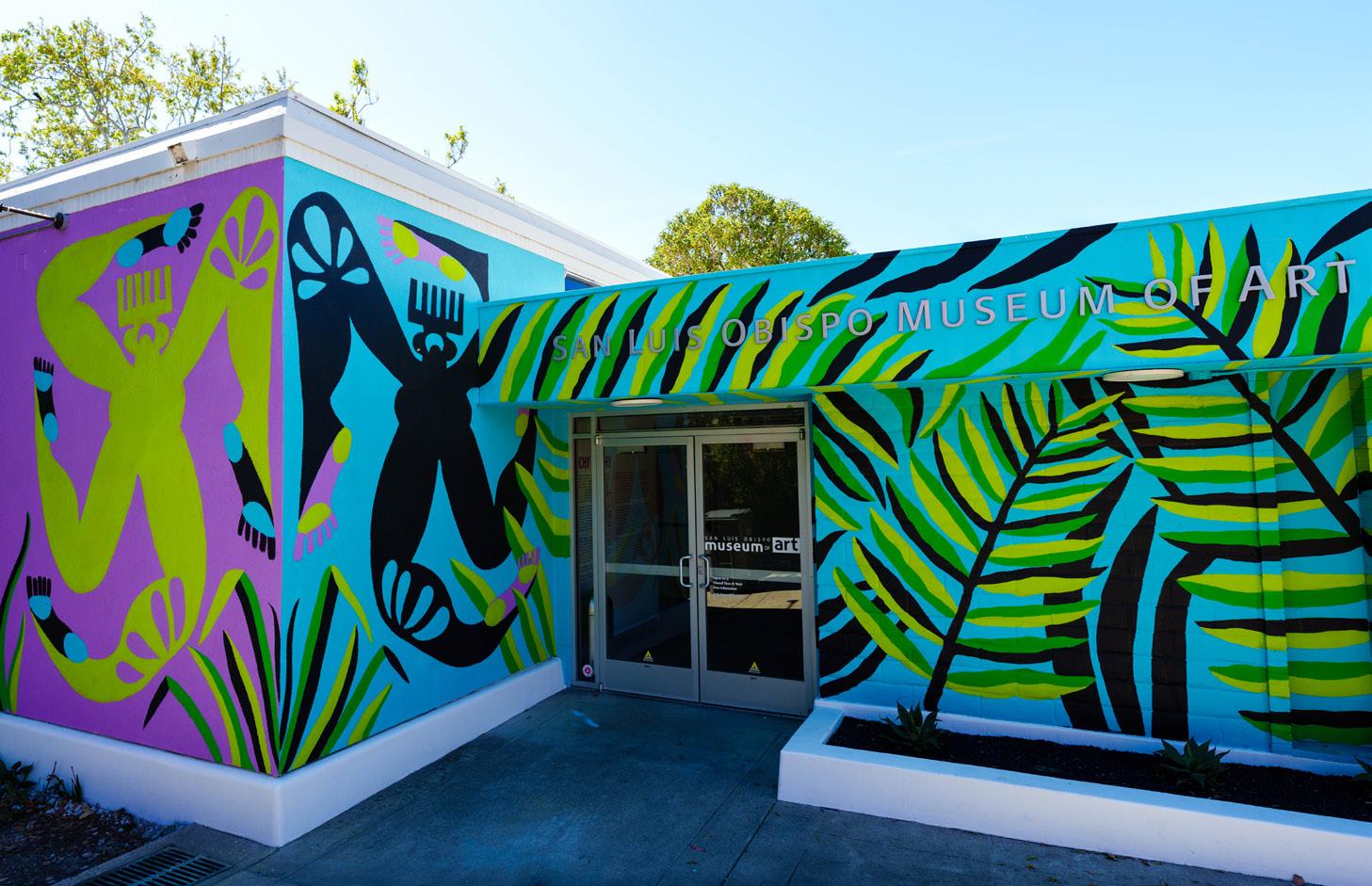
Culture provides artists with social context to define their work. Humans acquire culture through the learning processes of enculturation and socialization, which is shown by the diversity of cultures across societies. All artworks are, to some extent, the products of their culture, and they reflect prevailing assumptions and beliefs.
The importance of art and culture in a society goes deeper than just communication and understanding. Surveys have shown that in the US, high school students that are exposed to art and arts of different cultures are twice as likely to volunteer “See and Missed” and are 20 percent more likely to vote once they reach 18. It has also been noted that communities that have arts and culture woven into the fabric of their towns attract more tourism, develop more talent and innovation and it improves the health and well-being of community members.
The second is a mural on the outside of SLOMA, created by Erin Leann Mitchell, and is called “Calafia was Here.” Calafia is described as the fictional queen of the island of California, first introduced by sixteenth-century poet Garci Rodríguez de Montalvo in his epic novel, Las Sergas de Esplandián (The Adventures of Esplandián). In Montalvo’s fictional world, this island was ruled by Calafia and inhabited by her Amazon tribe. The entire piece emphasizes the often forgotten role of Black women throughout all — but specifically Californian history.
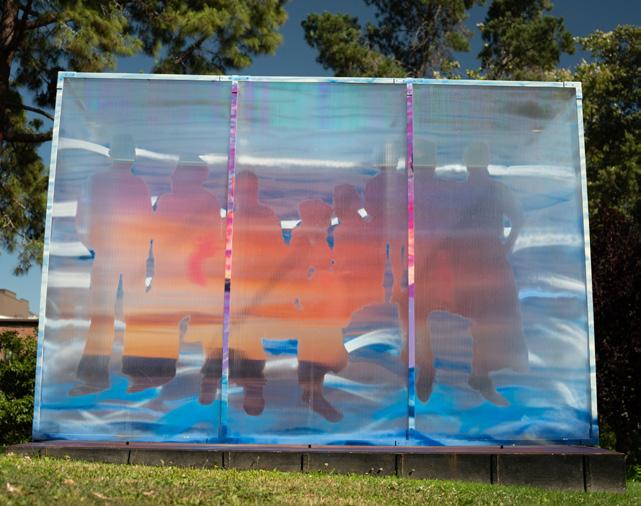
Both of these works are incredibly personal to the artists and share a commonality with our area. It is important to note that both of these installations were created by BIPOC women and that alone is a huge change in our town’s previous cultural landscape. It is a breath of fresh air to learn new histories about the town and state we are all living in. The opportunity to learn more about other cultures and their ties to our place allows growth, understanding and communication to flourish. It is a community’s responsibility to allow these different cultures to share their stories, artworks and performances and to listen, learn and grow.







